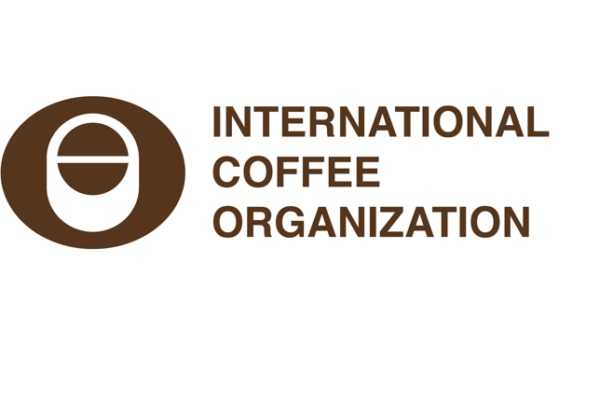LONDON, UK – The ICO Composite Indicator Price (I-CIP) averaged 186.36 US cents/lb in March, a 2.4% increase from February 2024, informs the International Coffee Organization in its latest report. The I-CIP posted a median value of 185.64 US cents/lb, having fluctuated between 181.39 and 193.26 US cents/lb. The March 2024 I-CIP is above the March 2023 I-CIP by 9.6%, with the 12-month rolling average at 168.82 US cents/lb.
The I-CIP grew steadily in March 2024, reaching an 18-month high.
Remarkably, the Robustas have reached their highest level since October 1994 when they averaged 169.43 US cents/lb
The Colombian Milds increased by 0.4% whilst the Other Milds remained stable with a 0.0% change, thereby reaching 210.27 and 208.88 US cents/lb, respectively, in March 2024.
The Brazilian Naturals presented a decline of 0.5%, reaching an average of 185.77 US cents/lb. However, the Robustas grew by 8.2% to 165.84 US cents/lb, the highest level in almost 30 years.
ICE’s London market was also a strong driver of the growth, having increased by 4.3% to 148.53 US cents/lb, whilst the New York Futures market contracted by 0.4% to 184.59 US cents/lb.
The Colombian Milds–Other Milds differential expanded from 0.75 to 1.39 US cents/lb. The Colombian Milds–Brazilian Naturals differential grew 7.5% to 24.51 US cents/lb, whilst the Colombian Milds–Robustas differential shrank 21.1% from February to March 2024, averaging 44.43 US cents/lb.
Meanwhile, the Other Milds–Brazilian Naturals differential grew 4.9% reaching 23.12 US cents/lb. However, the Other Milds–Robustas and the Brazilian Naturals–Robustas differentials both contracted 22.5% and 40.5%, averaging 43.04 and 19.92 US cents/lb, respectively, in March 2024.
Arbitrage, as measured between the London and New York Futures markets, retracted by 16.0% to 36.06 US cents/lb in March 2024.
Intra-day volatility of the I-CIP increased by 0.3 percentage points to 7.1% between February and March 2024. The Colombian Milds’ and Other Milds’ volatility decreased to 7.5% and 7.7%, respectively.
Meanwhile, the Brazilian Naturals’ volatility declined by 0.7 percentage points to 8.1% from February to March 2024. The Robustas presented an average volatility of 8.8% for the month of March.
The London Futures market’s volatility also decreased by 0.3 percentage points to 9.4%. Lastly, the New York futures market’s volatility moved in the same direction to that of London, reaching 8.6%, a 0.3 percentage point decline.
The London certified stocks expanded by 22.1% to 0.49 million 60-kg bags. Certified stocks of Arabica coffee reached 0.63 million 60-kg bags, an 80.8% increase since February 2024.
Exports by Coffee Groups – Green Beans
Global green bean exports in February 2024 totalled 10.43 million bags, as compared with 9.52 million bags in the same month of the previous year, up 9.5%. These are the largest February exports on record, beating the previous record set in 2019 of 10.34 million bags.
The magnitude of the latest increase in exports of green beans, however, is a more reflection of a favourable base effect and a comparative normalization of supply. From December 2022 to June 2023, the exports of green beans fell consecutively, with the cumulative total decreasing by 8.2% to 66.92 million bags, the lowest level seen for those same seven months since December 2016 to June 2017.
The cumulative total for coffee year 2023/24 to February is 50.82 million bags, as compared with 45.5 million bags over the same period a year ago, up 11.7%. Brazil was the main origin driving the growth, with exports expanding by 59.9% in February 2024 to 3.38 million bags from 2.11 million bags in February 2023, while among the different groups, the Brazilian Naturals were responsible.
Shipments of the Other Milds increased by 4.2% in February 2024 to 1.91 million bags from 1.83 million bags in the same period last year. Peru, the second largest producer and exporter of the Other Milds, continues to be the main driver of the growth of this group of coffee, with the origin’s exports thereof increasing by 178.6% to 0.18 million bags from 0.06 million bags in
February 2023, representing an increase of 65.5% for the year to date (2.27 million bags). Peru’s exports of the Other Milds are on track to be the third biggest on record. As a result, the cumulative volume of total exports of the Other Milds also increased by 6.6% in the first five months of coffee year 2023/24 to 7.72 million bags, versus 7.24 million bags over the same period in 2022/23.
Green bean exports of the Brazilian Naturals increased in February 2024, rising by 36.6% to 3.16 million bags from 2.59 million bags in February 2023. For the first five months of coffee year 2023/24, green bean exports of the Brazilian Naturals amounted to 17.73 million bags, up 16.7% from 15.19 million bags over the same period a year ago.
The sharp positive growth rate stems from the 38.4% increase in exports of the Brazilian Naturals from Brazil, the biggest producer and exporter of this group of coffee, which rose to 2.77 million bags in February 2024 from 2.0 million bags February 2023.
Exports of the Colombian Milds increased by 14.7% to 1.12 million bags in February 2024 from 0.98 million bags in February 2023. As a result, exports of the Colombian Milds for the first five months of coffee year 2023/24 are up 13.1% at 5.27 million bags, as compared with 4.65 million bags in the first five months of coffee year 2022/23.
The double-digit growths, for both the current month and coffee year to date, are a consequence of the 11.9% weather-driven fall in exports in coffee year 2022/23 and subsequent normalization of supply conditions in Colombia, the largest producer and exporter of the Colombian Milds. For the current month and cumulative total to February 2024, the country’s exports of the Colombian Milds are up 15.4% and 13.2%, respectively.
In contrast to the Arabicas, green bean exports of the Robustas were down 3.7% to 4.24 million bags in February 2024 from 4.4 million bags in February 2023. Despite this, the cumulative total for the first five months of coffee year 2023/24 is up 9.2%, at 20.11 million bags, as compared with 18.41 million bags in the first five months of coffee year 2022/23. The main driver of February’s Robustas decrease was Vietnam, which shipped 2.54 million bags as compared with 3.17 million bags in February 2023, down 19.9%. Indonesia’s Robusta exports were also down 48.1%, with a net fall of 0.13 million bags
Exports by Regions – All Forms of Coffee
Exports of all forms of coffee from Asia & Oceania decreased by 17.0% to 3.97 million bags in February 2024. The main source of the double-digit downturn is Vietnam, which saw its exports fall by 19.7% to 2.73 million bags in February 2024 from 3.4 million bags in February 2023.
The size of the fall is the result of an unfavourable base effect, with the February 2023 export volume 1.04 million bags larger than the February average of the past six years (2.36 million bags). On balance, Vietnam’s February 2024 export volume should be deemed at a healthy level, benefitting from high and rising local prices (the local green bean price increased to an average 80,000 VND/kg on 15 February 2024, from 61,000 VND/kg in the middle of November 2023) and triggering the release of stocks as farmers took advantage. Moreover, the Tet (lunar new year, which fell on 10 February 2024) would have brought additional supply to the market as farmers sought extra income for the most important social calendar date for the country and its people.
In February 2024, South America’s exports of all forms of coffee increased by 41.7% to 4.93 million bags. The source of the strong positive growth is Brazil, which saw its exports increase by 51.0% in February 2024 to 3.64 million bags – the second highest February exports on record for the origin.
The overall recovery of Brazil’s export volume remains a reaction to the 31.8% fall in the February 2023 exports 2.41 million bags, the lowest February exports since 2.23 million bags in 2013. In coffee year 2022/23, Brazil’s exports declined by 7.9% to 36.5 million bags, the lowest level since the 32.69 million bags shipped in coffee year 2017/18. To date, Brazil’s exports are up 24.6% to 12.84 million bags.
Exports of all forms of coffee from Africa increased by 14.6% to 0.98 million bags in February 2024 from 0.86 million bags in February 2023. However, the cumulative total of 4.99 million bags for the first five months of coffee year 2023/24 remains down 2.5% as compared with the 5.1 million bags shipped in coffee year 2022/23.
Ethiopia was the driving force behind the region’s increased exports in February 2024, with its own exports having increased by 103.9% to 0.2 million bags from 0.1 million bags in February 2023. The size of the rebound is a due to a favourable base effect and a comparative normalization of market circumstances.
Contract disputes arising from a mismatch between local purchasing prices and global market prices had previously affected the volume of exports, leading February 2023’s shipment to be the lowest since 2010.
In February 2024, exports of all forms of coffee from Mexico & Central America were down 2.7% to 1.45 million bags, as compared with 1.49 million in February 2023. As a result, the cumulative total exports are down 3.9% for October 2023 to February 2024 at 3.94 million bags, as compared with 4.1 million bags for the same period a year ago.
Costa Rica, El Salvador and Guatemala were the main origins behind the region’s negative growth, with exports down 24.5%, 40.3% and 5.7%, respectively, and a combined net loss of 58,812 bags. Partly counterbalancing these origins were Honduras and Mexico, with a combined net export gain of 24,756 bags in February, up 2.0% and 6.5%, respectively.
Exports of Coffee by Forms
Total exports of soluble coffee decreased by 18.2% in February 2024 to 0.85 million bags from 1.04 million bags in February 2023. In the first five months of coffee year 2023/24, a total of 5.05 million bags of soluble coffee were exported, representing an increase of 5.0% from the 4.81 million bags exported in the same period during the previous coffee year.
Soluble coffee’s share in the total exports of all forms of coffee for the year to date was 9.0% in February 2024, down from 9.5% in the same period a year ago. Brazil is the largest exporter of soluble coffee in February 2024, having shipped 0.26 million bags.
Exports of roasted beans were up 14.1% in February 2024 to 56,425 bags, as compared with 49,439 bags in February 2023. The cumulative total for coffee year 2023/24 to February 2024 was 0.32 million bags, as compared with 0.3 million bags in same period a year ago.

















